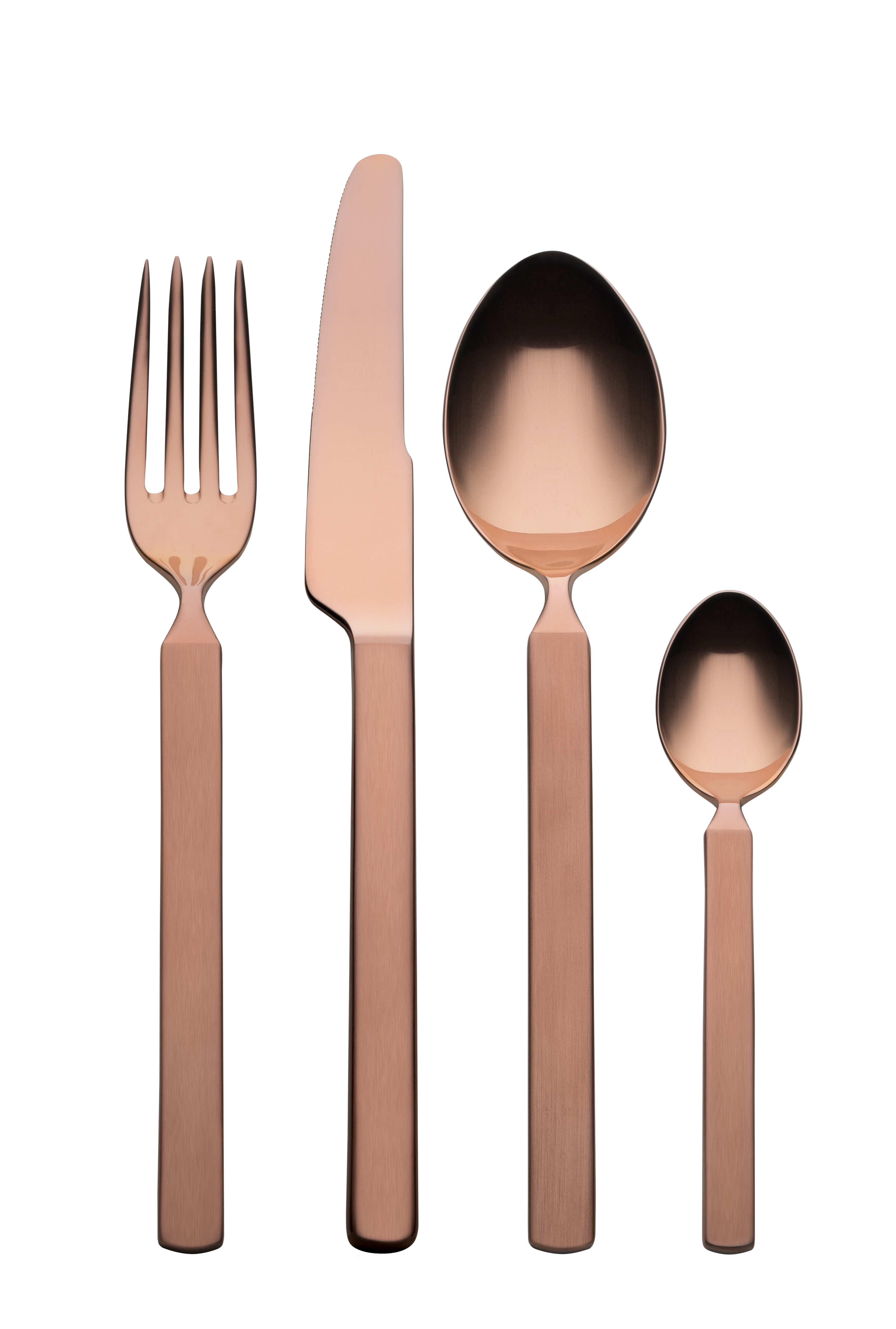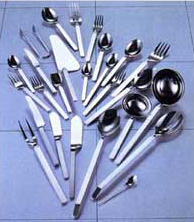DRY
Starting from the principle that cutlery is handled for a small amount of time and therefore need to have the shape of the hand, the ergonomic qualities in Dry are not in the handle but at the final part, which depends on the kind of food.
This cutlery is the representation of the South Europe tradition: the has a quite capable bowl, the fork has four elongated prongs, the knife has a very long blade.
The knife was born from a stainless steel sheet with a rectangular section, cut into regular bars – in the dimensions of the handle -, which are hot-forged to the progressive flattening of one extremity to form the blade (head-treated afterwards in salt baths for tempering).
The spoon and fork were also made from a sheet of metal, divided into small blanks, sheared alternately at the upright and inverse positions to avoid the waste in successive molds.
The series retains unchanged two details: the handle is always the same, except for the thickness, and the slender neck, significant visual paradox given that it is the point where the bending pressure is greatest.
Dry wins the Compasso D’Oro in 1884.



